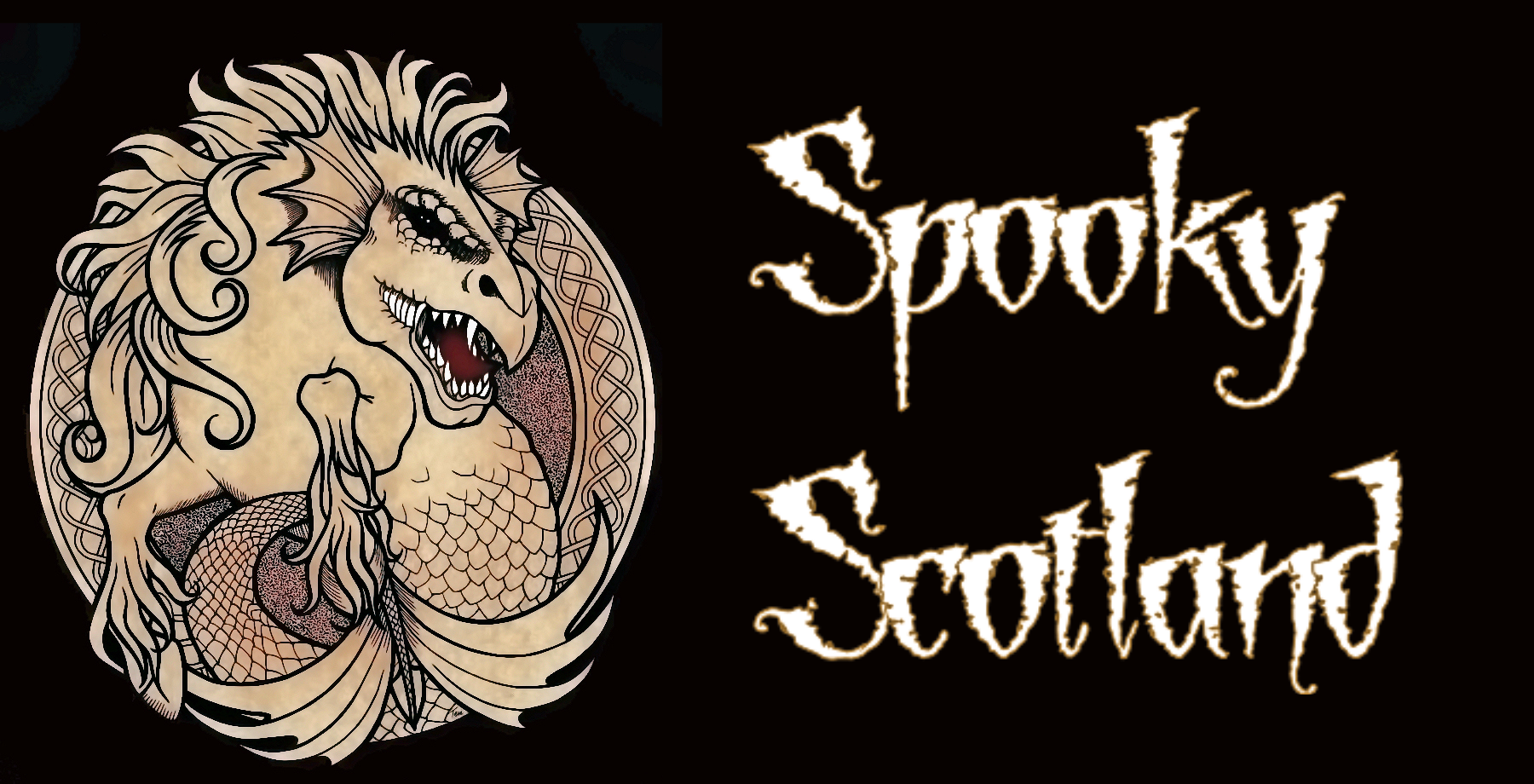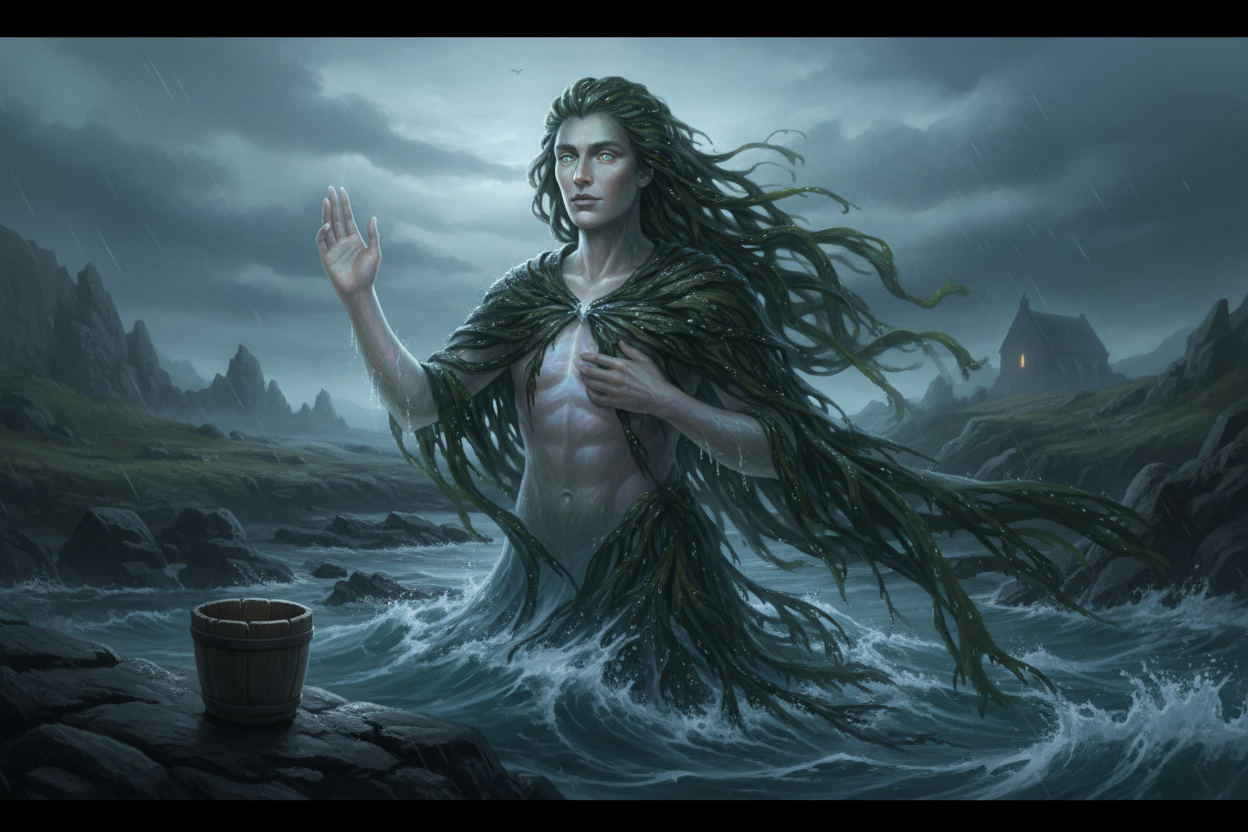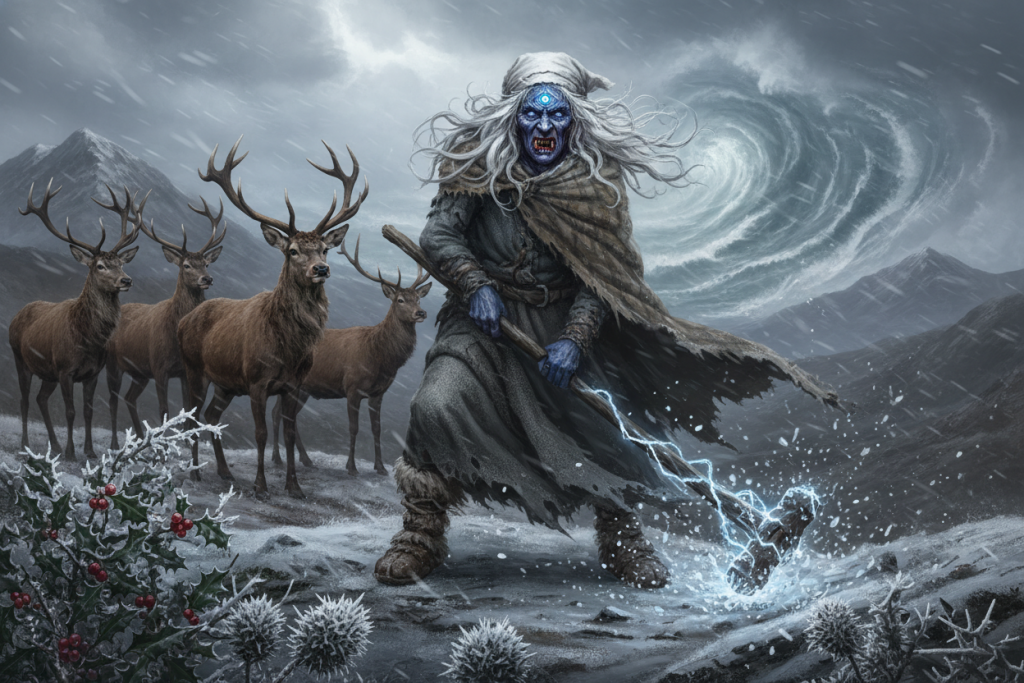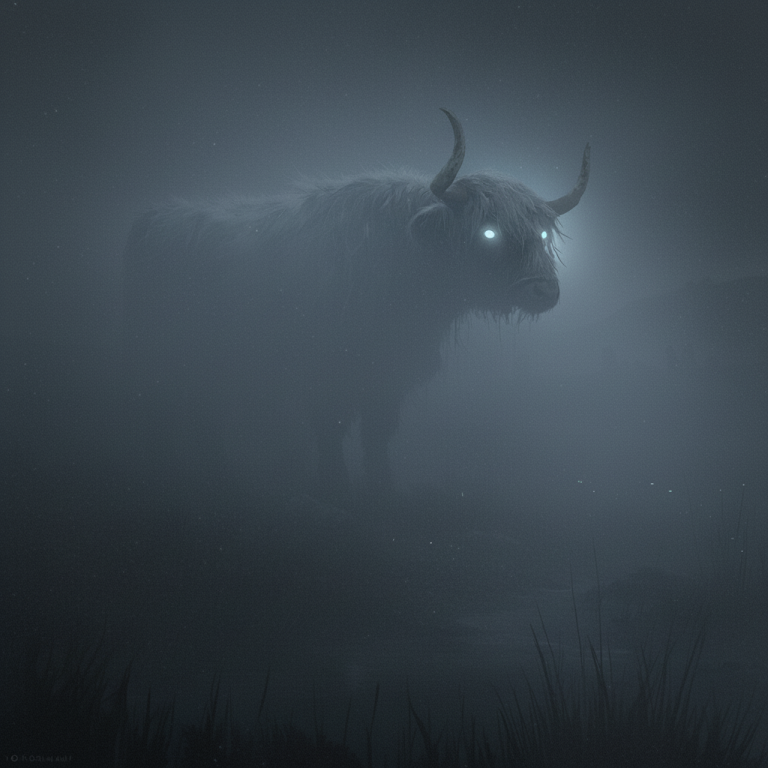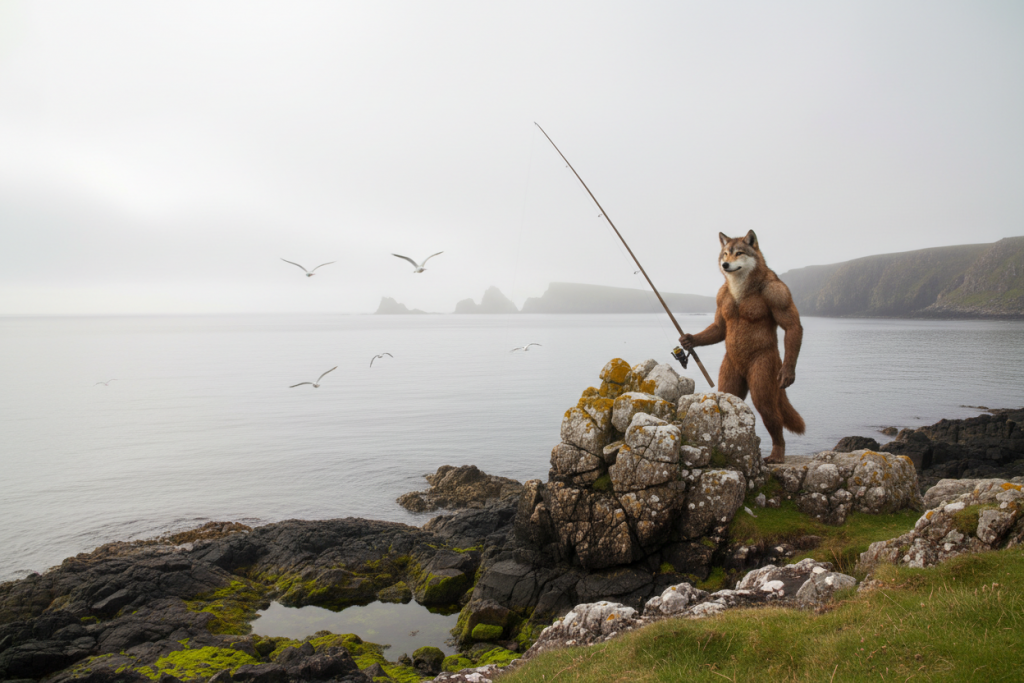Name pronunciation:
Sho-nie /ˈʃoːni/
General Information:
Seonaidh is a Scottish water spirit, possibly a remnant of a pre-Christian sea god once honoured by the people of the Isle of Lewis in the Outer Hebrides. The most well-known account of Seonaidh comes from the writer Martin Martin, who described a ritual in which islanders offered ale to the spirit each year to ensure an abundant supply of seaweed (known locally as seaware). The seaweed was essential, as it fertilised the poor soils of the islands and supported local agriculture.
Over time, the worship of Seonaidh intertwined with Christian traditions and folklore, blending pagan offerings with church ceremonies. Some scholars suggest Seonaidh may be linked to Manannán mac Lir, the sea god from Gaelic mythology, while others believe he became conflated with one of the Saints John due to linguistic evolution and Christian influence.
Appearance:
There are no surviving detailed descriptions of Seonaidh’s appearance. He is typically envisioned as an unseen or elemental sea presence rather than a humanoid figure. Some later interpretations describe him as an oceanic being or “god of seaweed”, but Martin Martin’s account focuses more on the ritual than Seonaidh’s physical form.
Habitat:
Seonaidh’s domain was the sea surrounding the Isle of Lewis. The offerings were made directly to the sea near the church of St. Maelrubha (St. Mulway), showing that his influence lay in coastal waters, seaweed beds, and the tides that brought fertility to the land.
Behaviour:
Seonaidh was thought to control the movement of seaweed and perhaps influence fishing yields and the fertility of cropland. Islanders appealed to him for good harvests, particularly through seaweed used as manure. He was not seen as malevolent, but as a powerful natural spirit whose favour ensured prosperity.
Shape-shifting Ability:
There is no evidence that Seonaidh possessed shape-shifting powers. Unlike many Highland or island water spirits such as kelpies, his myth centres on ritual interaction and exchange, not transformation or trickery.
Variant:
The name Seonaidh has several forms. It has been anglicised as Shony or Shoney and linguistically resembles Seonadh, a Gaelic word meaning augury, sorcery, or druidism. In modern Gaelic, Seonaidh is also a diminutive form of the name John. These overlapping meanings have led to speculation that Seonaidh was once a deity or spirit later reinterpreted as Saint John or another Christian figure.
Location in Scotland:
Seonaidh’s cult or tradition was firmly rooted in the Isle of Lewis, particularly around the village of Europie and the church of St. Maelrubha. Similar sea-offering customs, though without Seonaidh’s name, were known elsewhere in Scotland, including Shetland, Orkney, and St. Kilda. These often involved giving ale, porridge, or small tokens to the sea to ensure good fishing or plentiful seaweed.
Stories / Sightings or Experiences:
The Ale Offering of Lewis
Every year, until around 1671, the people of Lewis brewed ale for Seonaidh at Halloween. Each family contributed malt, which was brewed collectively into ale. At night, one man waded into the sea up to his waist carrying a cup of ale. Standing in the cold water, he called out for Seonaidh to send plenty of seaweed to enrich their fields, then poured the ale into the sea as an offering.
>Afterwards, the islanders returned to the church of St. Maelrubha, lit a candle on the altar, and, when signalled, extinguished it before celebrating through the night with dancing and drink near Europie. The ritual combined Christian formality with pagan intention — a thanksgiving and plea for abundance.
The Ministers’ Campaign
The old custom lasted for generations until church ministers finally brought it to an end. Reverend Donald Morrison and his son Kenneth of Ness spent twenty years trying to stop the practice. Kenneth Morrison, known for preaching with a sword at his belt, kept armed guards outside his church to deter old believers from slipping away to the sea with ale at Halloween.
Offerings in Other Islands
Similar rites persisted across Scotland. On Shetland, islanders would offer ale, pins, or coins to a water horse called Shoopiltee to ensure good catches. In St. Kilda, shells, rags, and metal tokens were thrown into the sea. Meanwhile, on Orkney, the first fish of a catch was cast back as an offering for luck. These parallels show that Seonaidh’s worship in Lewis reflected a widespread Scottish custom of reciprocity with the sea.
Shony Revisited
Later folklore and academic discussion expanded the story. Some scholars proposed that Seonaidh was a form of the sea god Manannán mac Lir or even a Christianised St. John. Others looked northward, linking his name to Old Norse roots such as són (“sacrifice”) or sjóli (“sea-defender”).
>In nineteenth- and twentieth-century accounts from collectors like Alexander Carmichael and John Gregorson Campbell, a related offering called “Big Porridge Day” or “Gruel Thursday” is described. During stormy seasons, islanders poured porridge into the sea to encourage seaweed to come ashore — a tradition thought to echo the old Seonaidh ceremony.
Purpose of the Myth or Legend:
The legend of Seonaidh illustrates how island communities expressed gratitude and sought balance with the sea that sustained them. The ritual offerings symbolised respect for nature’s cycles and the interdependence between land and ocean.
It also reflects the gradual Christianisation of older pagan practices in the Hebrides. What began as devotion to a sea spirit or deity became reshaped into a community ritual that mixed church attendance with ancient belief. For modern readers, Seonaidh stands as a reminder of the deep connections between folklore, faith, and the Scottish coastal environment. It also demonstrates how traditions evolve yet keep their roots in the rhythms of local life.
